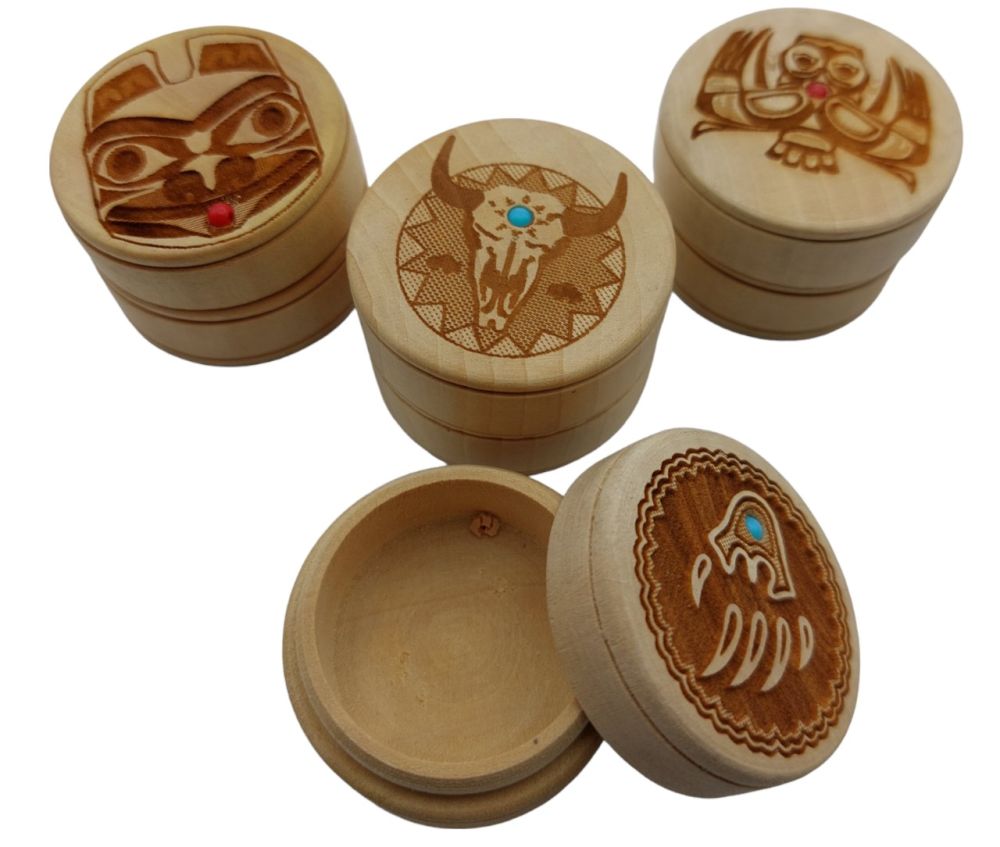We use cookies to make your experience better.
TimmersGems has a new website, existing customers also need to register again.
Indian dreambox from the Zuni Indians in the U.S.A. 30x40mm
We recently met them again, during the large gemstone/Indian manifestation in Tucson. The Zuni family makes beautiful wooden boxes "to store precious things such as teeth or hair".
Availability:
In stock
SKU
121184
- Buy 4 for €15.00 each and save 21%
Indians are the original inhabitants of America. Columbus, who thought he had arrived in the Indies in 1492 (his intention was to travel west across the Atlantic Ocean and thus arrive at the Indies), called the inhabitants indios - Indians. Because the name "Indian" comes from a Western point of view, several alternative names have come into use. In the United States, the American government and academics introduced the term Native American in the 1960s for the groups under the responsibility of the Bureau of Indian Affairs. An additional reason was the confusion with residents of Indian descent, who are also called Indians in English. However, this new terminology was not widely appreciated because it was adopted without stakeholder input and because it lumped together Native Americans and the native inhabitants of Alaska, Hawaii, Puerto Rico, and the Pacific Islands. From a 2005 report by the U.S. Census Bureau-conducted survey found that nearly 50% of Native Americans prefer to be called "American Indians", while just over 37% prefer "Native American". Today both terms are used. It is notable that the Bureau of Indian Affairs now uses the term American Indian instead of Native American. The name First Nations/Premières Nations is used in Canada. In Latin America, the Indians are officially called indígenas (natives). In the scientific world people also speak of Amerindians or Amerindians. The Eskimos (sometimes called Inuit, although that word does not strictly speaking apply to the Yupik in Alaska) are often (in politics and science) not considered Indians, albeit as "native Americans". Emancipation with regard to ethnic naming is increasingly a matter for the indigenous communities themselves, in both Canada and the US, who are becoming increasingly (self-)aware in cultural and political terms. For example, indigenous peoples who have been officially recognized by the American and Canadian governments and consider themselves a fully-fledged political and cultural state are increasingly indicating that they no longer want to be called tribes (as in the US) or bands (as in Canada). become Nations (nations or states). In addition, the names that Europeans (or surrounding indigenous peoples) introduced in the past are increasingly being replaced by the names that peoples gave to themselves. For example, instead of Iroquois, people now more often speak of Haudenosaunee. Other name changes include Lakota (Dakota/Nakota) for Sioux, Mexicah for Aztecs, Ñudzahui for Mixtecs, and Mapuche for Araucanians. "Indian" is not capitalized in Dutch because it does not indicate a nation but several ethnic groups (just as is the case with gypsies). King William I at the time referred to his subjects in the Dutch East Indies as "Indians" in a number of his Royal Decrees. However, "Native" became the common term. At the arrival of Columbus, North America was divided into a number of cultural regions. The best known are those of the far north (Arctic region) and those of the prairies in the Middle West, the Great Plains. On the Plains, most people lived along the rivers and were farmers. Farmers also lived in eastern and southwestern North America. The main crops were corn, beans and pumpkins. These originally came from Mexico. Cotton was also grown in the southwest and sunflowers in the east. Tobacco was planted throughout virtually the entire present-day United States and southern Canada. The stereotypical image of "the Indian" is based on the Prairie peoples of the nineteenth century. This does not mean that before Columbus (without horses!) bison or other animals were not hunted. Especially in the northern part of the Great Plains there are many so-called "Buffalo Jumps". Here bison were chased into a ravine, where they fell to death. At the Buffalo Jump Head-Smashed-In in Alberta, Canada, there is a museum showing how this worked.
| Dimensions | 30x40mm |
|---|---|
| Country of Manufacture | United States |












